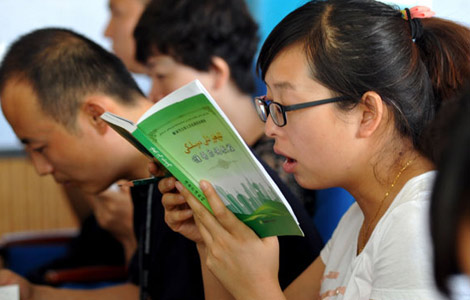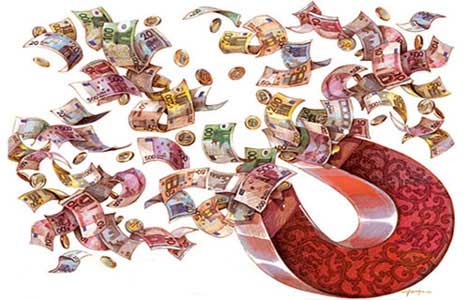Look on the bright side
Updated: 2013-08-01 09:03
By Chen Dongxiao (China Daily)
|
||||||||
China can successfully make the industrial transition that will generate stable and sustainable growth in the long run
There are voices heralding the doomsday for China's traditional development mode, the outbreak of a debt crisis, rigidification of the financial system, the vanishing of the demographic dividend, or a stagnation in reforms. These observers have one thing in common: growing pessimism about China's economic prospects.
However, while these downbeat views of the Chinese economy and its development momentum may contain some element of truth, they are too narrow to show the whole picture.
First of all, China's economic growth is depending less and less on investment and exports, as consumption and innovation emerge as the main drivers for growth, although it will take a few years to see the transition take effect. The country's economic slowdown is an inevitable trend, since no country can stay on such a fast track forever. Even so, the Chinese economy is expected to maintain an annual growth rate of around 7 percent, even with the sluggish global recovery. What best serves the long-term interests of the Chinese people is an economy that boasts a more rational structure and establishes a better social and natural environment, even if it means a slower pace of growth.
Second, the government debt issue is starting to be addressed. China's land-reliant financing has come to a dead end, and the financing vehicles of its local governments have run out of control. Some sound solutions are needed right now to avert Detroit-style bankruptcies triggered by the piling up of debts. The key here is not to alleviate the burden of old debts, because the central coffers have enough resources to repay them all. What is needed is the efficient and proper management of financial revenues and expenditures by local governments in the future to prevent new debts being incurred before the old ones have been repaid.
The debt issue is now being tackled and straightforward proposals are being submitted on bond issuance by local governments. Also, GDP is no longer counted as the main yardstick for measuring the performance of officials. The central government has also called time and again for the liquidizing of sleeping funds, and issued a decree banning local governments from constructing new office buildings for the next five years.
Third, China has taken a substantive step to reform its financial system. On July 19, the People's Bank of China announced its lifting of controls over lending rates, the first step in liberalizing interest rates, and demonstrating the central bank's resolve to advance reforms and down-to-earth policy of cracking the harder nut first. The liberalization of interest rates and internationalization of the yuan are the key links in reform of China's financial system, which has already started and will inject new vitality into the country's real economy.
The lifting of the controls on lending rates, for instance, will surely drive commercial banks to lend more to privately owned small and medium-sized enterprises. Another example is the decision to create a free trade zone in Shanghai, a move that demonstrates the courage of the new leadership to push forward with reform and foretells the healthy prospects for China's financial and economic reforms.
Most Viewed
Editor's Picks

|

|

|

|

|

|
Today's Top News
China's obesity rate on the increase
Washington Post sold to Amazon's founder
Fonterra says sorry for 'anxiety'
Detroit Symphony brings China to NYC
Service sector drives up growth
Globalization of Chinese culture becomes hot topic
Huawei expands in London
Web 'answer to export woes'
US Weekly

|

|













